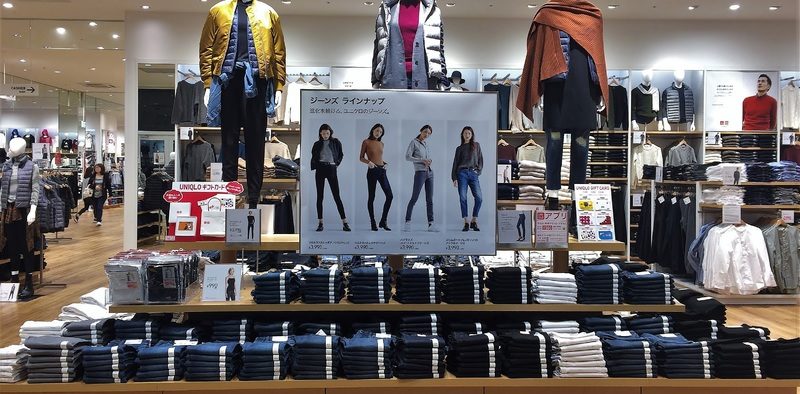Visual Merchandising Your Store
Share

Visual merchandising is about presenting your retail space in such a way that it maximises your sales. Strategically presenting your products helps you to create a unique identity for your business. You can set yourself apart from your competition by making your store feel inviting and appealing to customers.
Visual Merchandising Tips:
Have a Plan: Decide what you will be merchandising and what fixtures and props will best display them. Create your design using digital software or just with pen and paper. This will help you to visualise your display before setting it up.
Choose Engaging Colours: Effective retail displays attract potential customers to your store. When you’re designing displays, choose engaging colours, décor and stock arrangements. Good displays appeal to both the head and the heart of your customers.
Create Space for Customers: The trend in retail today is toward more space, especially at entryways. Creating space makes the store feel modern and contemporary. Aim for an open look, particularly in the parts of your store where you offer higher-end products.
Create a Theme: Establish a theme throughout your store that you can carry through to your floor displays. Things like colour, concept, lighting, fragrance and music can all contribute to a consistent theme. Create seasonal themes or individual themes that reflect your store’s style and personality.
Update Regularly: Update your window and floor displays frequently. Seasons, themes and promotions only last so long and changing displays in a timely manner keeps things fresh and new for customers shopping in your store.
Organise Stock Groups: Group related stock items together, and use your premium spaces such as the ends of your aisles, to feature profitable products. You can group similar products together to encourage add-on sales (e.g. nappies and baby wipes) or group different but related products together to help make companion sales.
Stay Relevant: Investigate recent purchase trends, new stock arrivals, seasonality and upcoming events or holidays to determine what merchandise you should display. Decide if the items you choose to display are relevant to your customer as all displays cost money and therefore should have a purpose to serve (like a return on your investment).
Keep it Simple: As the saying goes “less is more!” Although this may seem obvious, keeping displays simple is effective, yet often overlooked. Ensure that all displays have items that are clearly visible, properly displayed, within easy reach, neat, organised and sign posted.
Keep it Clean: A clean and well-presented store shows you care and will inspire confidence in your customers. Dust your displays regularly. Ensure shelves, showcases, racks and other POS materials are well maintained. Fix any damages quickly, change old posters regularly, remove unsightly stickers and replace burned out light globes as necessary.
Add Some Ambience: You can enhance your visual merchandising by adding aroma, music and clever lighting. Not only does this increase the impact of your displays, it creates a good impression of your overall store to shoppers. By stimulating more than one sense, you create a shopping experience for the customer.
Monitor Displays: Use your store’s data to monitor sales and inventory levels, especially on those items in your displays. This will ensure that you stay on-top-of stock levels if something is selling really well, so you are in a position to reorder quickly. Conversely, if your display stock is not selling, you can look at other options like moving its location or replacing the item with something else.
Read Seven Principles of Successful Online Merchandising
Key Points to Remember
- Be topical and seasonal.
- Use props, images, signage and products to convey an idea and message that will help your customers connect with your products.
- Change your window displays regularly. Make sure products in your display are easy to find inside the store, but not necessarily at the front, where your customers will need to look no further and therefore not venture deeper into your store.
- When you change your window display theme, remember to change your store’s interior theme to match.
- Be careful not to clutter your products.
- Place a striking or appealing product in plain view of your entrance.
- Capitalise on spaces at the end of shelves.
- Place your popular or targeted products between eye level and knee level.
- Place your most profitable items at eye level.
- Place products for children at children’s eye levels.
- Change your product displays regularly and keep them clean and well ordered.
- Feature a few product items, including product blurb and flyers, at your point-of-sale space.
- Place high-profit items in high traffic areas and demand items in low-traffic areas.
- Make sure all of your stock is priced. No one wants to have to ask how much something costs.
- Be careful with patterns. Putting items in neat, little rows looks nice but discourages customers, who may hesitate to mess up the pattern.
- Place impulse items (the low-cost, repeat-purchase items) around the counter and in high-traffic areas.
- Place your high-demand products at the back to draw customers through the store.
- Remember to keep the outside of your store clean and tidy to entice customers to come in.
Retail displays are a vital element of your branding. They can help your business to achieve sales because these visual elements make a good first impression on your potential customers. If customers like the way your store looks, they are likely to spend more time and money at your business.


















Follow us on social media